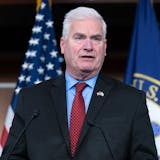•••
Critics of President Joe Biden’s proposal to adopt term limits for U.S. Supreme Court justices argue that this would somehow diminish judicial independence (”Calls for court term limits attack foundations of our federal republic,” Opinion Exchange, Aug. 5). Just how that would occur is not specified, and for good reason. We have considerable experience with judicial term limits in the United States, and zero evidence that it has any impact on judicial independence. Over 30 states have term limits for their appellate courts, in the form of a mandatory retirement age. The majority of these states, including Minnesota, set the age at 70; a few go to 72, 73 or 75. Minnesota’s mandatory retirement age has been in place since at least 1973 and dozens of Minnesota Supreme Court justices, including myself, have retired at or before reaching age 70. Current U.S. Supreme Court Justices Clarence Thomas and Samuel Alito, at ages 76 and 74, could not serve as judges in Minnesota, and Chief Justice John Roberts, 69, would only be able to serve the remainder of his 69th year.
The mandatory retirement age provides an objective basis for the transition to a new, younger justice and provides no threat to the independence of any sitting or retiring justice.
Sam Hanson, Minneapolis
The writer is a former justice of the Minnesota Supreme Court.
•••
I found Brian Melendez’s counterpoint on term limits for the Supreme Court to be well-reasoned (”Why Supreme Court reform is needed — and isn’t an assault on the republic,” Opinion Exchange, Aug. 7). While I have resisted term limits for federal judges on the grounds of political independence, recent partisan decisions by the current court have shown that that independence is built on a foundation of personal integrity. That foundation may be built on sand.

